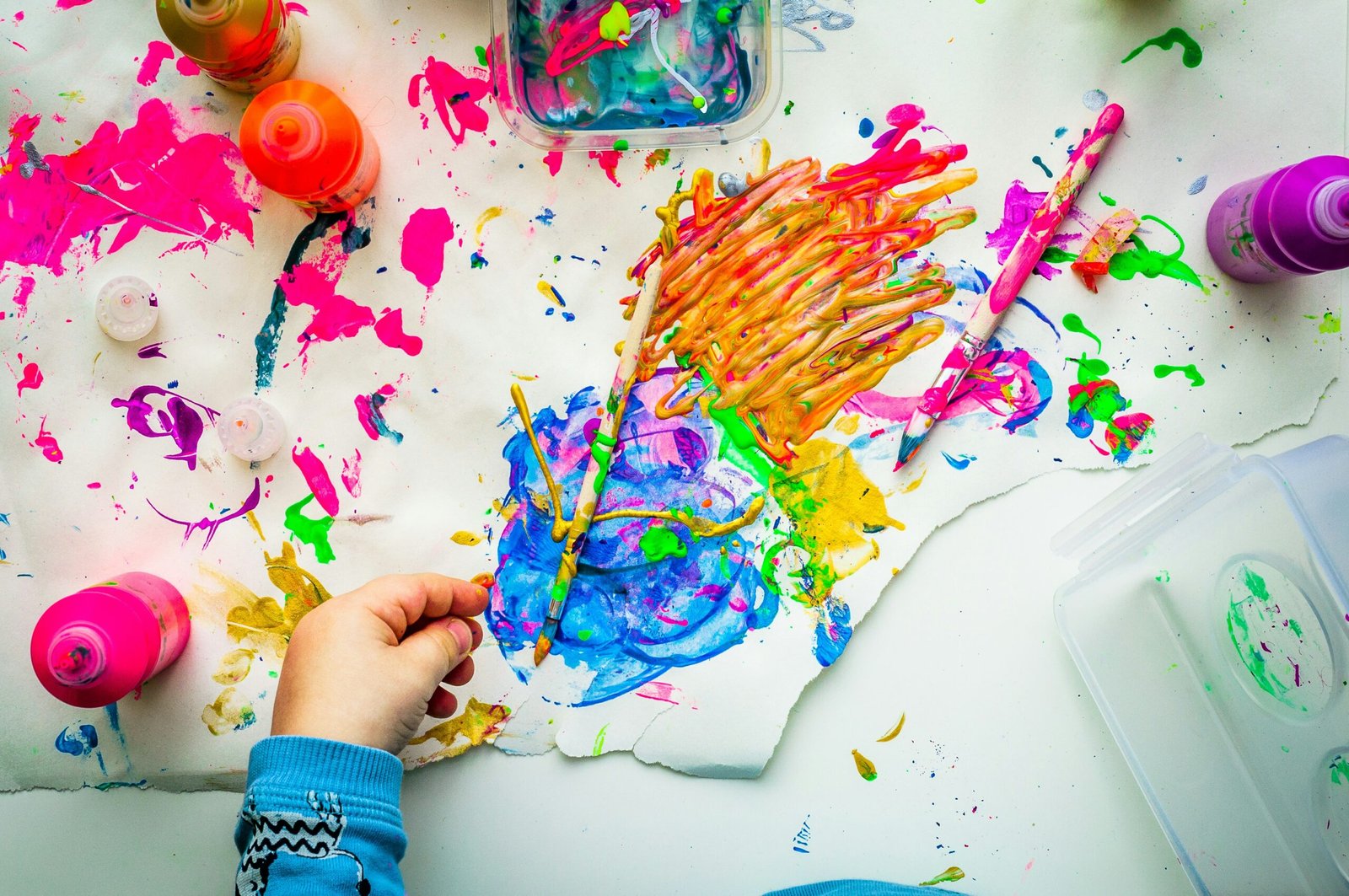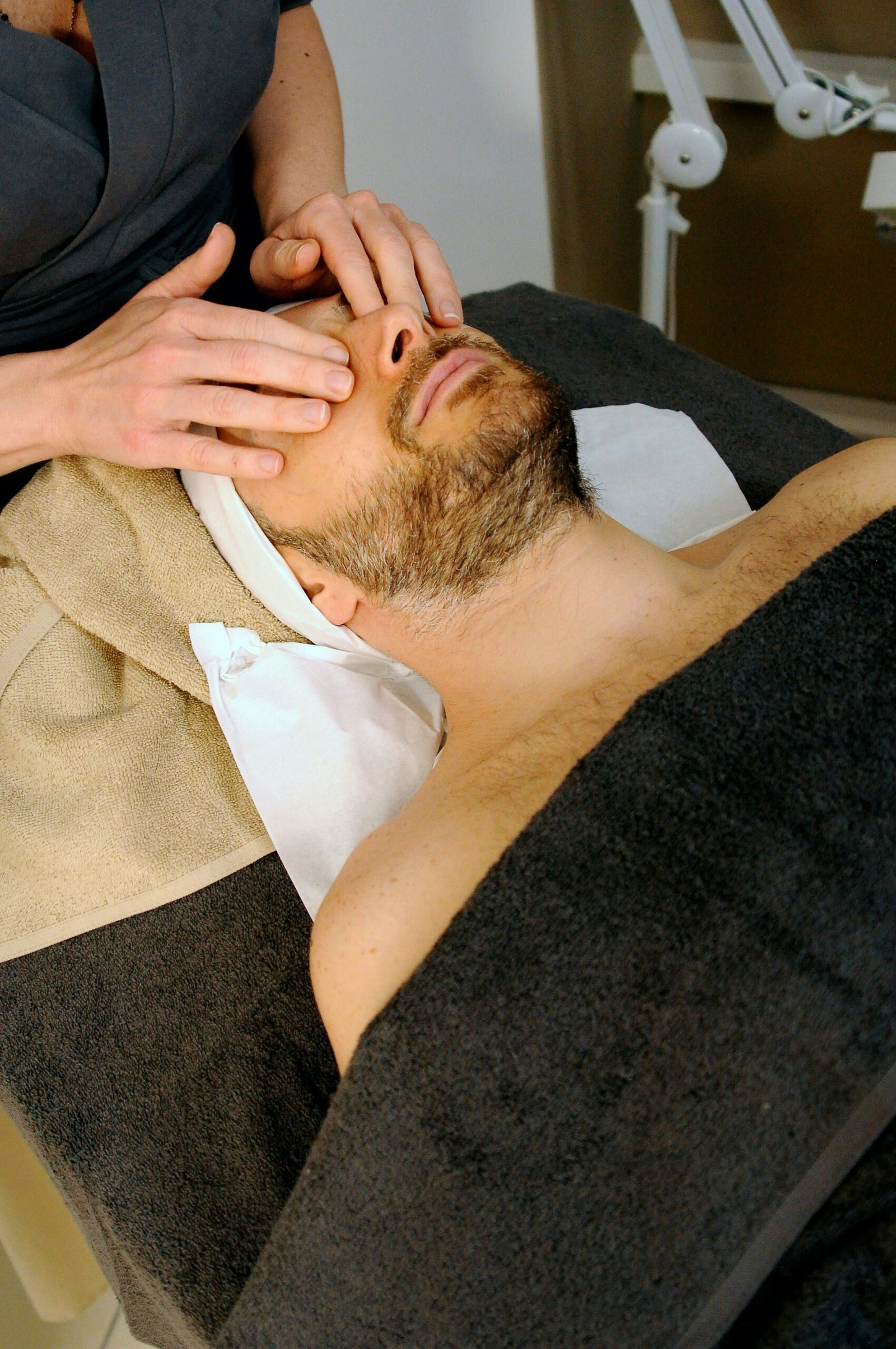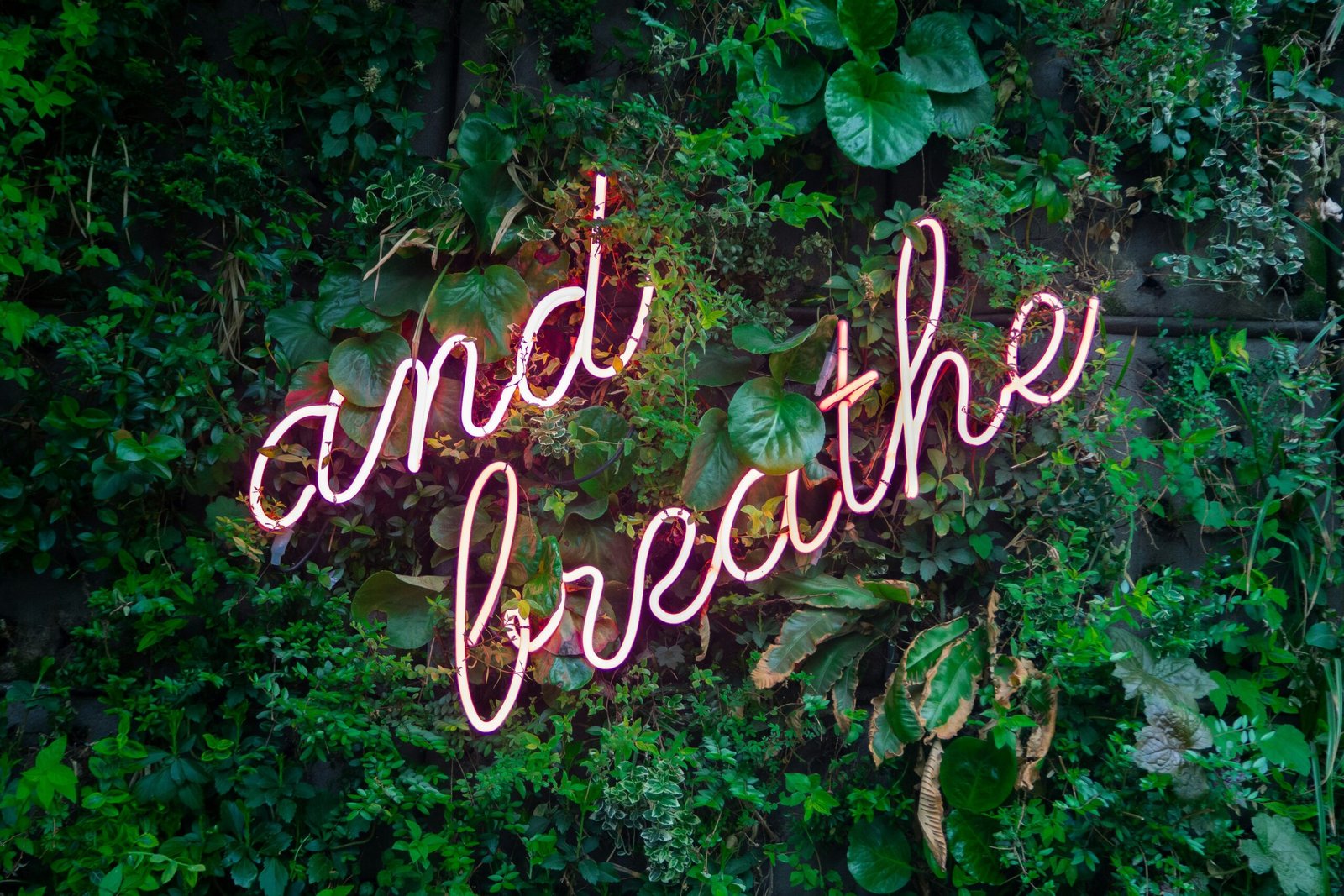The Power of Art Therapy: Healing Through Creative Expression

Art therapy is a form of therapy that uses the creative process of making art to improve and enhance the physical, mental, and emotional well-being of individuals. It is a holistic approach that combines psychology and art to promote healing and self-discovery.
Through art therapy, individuals are encouraged to express themselves freely and explore their thoughts, feelings, and experiences through various art forms such as painting, drawing, sculpting, and collage. The process of creating art allows individuals to tap into their subconscious mind and access emotions that may be difficult to express verbally.
Art therapy has been found to be particularly beneficial for individuals who have experienced trauma, grief, or other emotional challenges. It provides a safe and non-judgmental space for individuals to process their emotions and gain a deeper understanding of themselves.
One of the key benefits of art therapy is its ability to promote relaxation and reduce stress. Engaging in the creative process can help individuals to focus their attention and enter a state of flow, where they are fully immersed in the present moment. This can be especially helpful for individuals who struggle with anxiety or have difficulty relaxing.
In addition to its emotional benefits, art therapy can also have a positive impact on physical health. Studies have shown that engaging in creative activities can help to reduce blood pressure, improve immune function, and enhance overall well-being. The act of creating art can be a form of self-care and self-expression, allowing individuals to nurture their physical and mental health.
Art therapy is not limited to individuals with artistic talent or experience. It is a process that can be adapted to meet the needs and abilities of each individual. The focus is not on the final product, but rather on the process of creating and the insights gained along the way.
Overall, art therapy is a powerful tool for healing and personal growth. It allows individuals to tap into their inner creativity and use it as a means of self-expression and self-discovery. Whether it’s through painting, drawing, or any other art form, art therapy has the potential to transform lives and promote healing in a unique and profound way.
Art therapy is a powerful tool that can be used to address a wide range of emotional and psychological issues. It is particularly effective for individuals who may struggle to express themselves verbally or find it difficult to articulate their emotions. The act of creating art allows individuals to tap into their subconscious and access parts of themselves that may be hidden or suppressed.
One of the key principles of art therapy is the belief that the creative process itself is healing. By engaging in art-making, individuals can gain insight into their thoughts and feelings, develop problem-solving skills, and learn to cope with stress and trauma. The art therapist serves as a guide, helping individuals navigate their creative journey and providing support and guidance along the way.
Art therapy can be used in a variety of settings, including schools, hospitals, rehabilitation centers, and private practice. It can be beneficial for individuals of all ages, from children to older adults. In a school setting, art therapy can help children develop social skills, improve self-esteem, and manage behavioral issues. In a hospital or rehabilitation center, art therapy can aid in the recovery process by reducing anxiety, promoting relaxation, and enhancing overall well-being.
The benefits of art therapy are numerous. Research has shown that engaging in art-making can reduce stress, improve mood, and increase self-awareness. It can also enhance cognitive abilities, such as problem-solving and critical thinking. Additionally, art therapy has been found to be effective in treating a variety of mental health conditions, including depression, anxiety, and post-traumatic stress disorder.
Overall, art therapy offers a unique and powerful approach to healing and personal growth. By harnessing the creative process, individuals can tap into their inner resources and discover new ways of understanding and expressing themselves. Whether used as a standalone therapy or in conjunction with other treatment modalities, art therapy has the potential to transform lives and promote lasting change.
Enhancing Problem-Solving Skills
Engaging in art therapy can also improve problem-solving skills. The creative process often requires individuals to think outside the box and find innovative solutions to artistic challenges. This can translate into other areas of life, helping individuals become more adept at finding creative solutions to everyday problems.
Promoting Mindfulness and Mind-Body Connection
Creating art requires individuals to be present in the moment, fully engaged in the creative process. This can promote mindfulness, helping individuals focus on the present and cultivate a greater sense of self-awareness. Additionally, art therapy can help individuals strengthen the mind-body connection, as they become more attuned to the physical sensations and movements involved in creating art.
Building Resilience and Adaptability
Art therapy can foster resilience and adaptability by encouraging individuals to embrace mistakes and learn from them. In the creative process, mistakes are often seen as opportunities for growth and experimentation. This mindset can be transferred to other areas of life, helping individuals bounce back from setbacks and adapt to new challenges.
Promoting Socialization and Connection
Art therapy can also provide opportunities for socialization and connection. Group art therapy sessions allow individuals to engage with others, share their artwork, and learn from one another. This can foster a sense of belonging and community, particularly for individuals who may feel isolated or disconnected.
Stimulating Cognitive Functioning
The act of creating art requires individuals to engage in various cognitive processes, such as problem-solving, critical thinking, and decision-making. This can help stimulate cognitive functioning and improve cognitive skills, such as memory, attention, and concentration.
In conclusion, art therapy offers a multitude of benefits for individuals across different age groups and backgrounds. From emotional release and self-exploration to enhancing problem-solving skills and promoting socialization, art therapy can be a powerful tool for personal growth and healing.
Who Can Benefit from Art Therapy?
Art therapy is a versatile form of therapy that can benefit individuals of all ages and backgrounds. It can be particularly helpful for:
1. Children and Adolescents
Children and adolescents often struggle to express their emotions and navigate complex life experiences. Art therapy provides them with a safe and supportive outlet to explore their feelings, build resilience, and develop healthy coping mechanisms. Through the use of various art materials and techniques, young individuals can engage in a creative process that allows them to communicate their thoughts and emotions without relying solely on verbal expression. This can be especially valuable for children who may not yet have the vocabulary or emotional maturity to articulate their experiences effectively.
2. Individuals with Mental Health Issues
Art therapy is widely used as a complementary treatment for individuals with mental health conditions such as depression, anxiety, and PTSD. It can help them manage symptoms, improve self-awareness, and develop effective coping strategies. The creative process involved in art therapy can serve as a form of self-expression and self-reflection, allowing individuals to explore and process their emotions in a safe and non-threatening way. By engaging in art-making, individuals can gain insights into their own thoughts and feelings, as well as develop a greater sense of self-empowerment and control over their mental health.
3. Survivors of Trauma or Abuse
Art therapy can be particularly beneficial for survivors of trauma or abuse. It provides them with a non-verbal means of processing their experiences, rebuilding trust, and reclaiming their sense of self. Traumatic experiences can often be difficult to put into words, and traditional talk therapy may not always be sufficient in addressing the complex emotions and memories associated with trauma. Art therapy offers a safe and supportive space for survivors to express and explore their feelings through art, allowing for a deeper understanding and integration of their traumatic experiences. The creative process can also help survivors regain a sense of control and agency over their lives, as they actively engage in the healing process.
4. Older Adults
Art therapy can enhance the quality of life for older adults by promoting cognitive function, memory recall, and social interaction. It can also help them navigate the challenges of aging, such as loss of independence or physical limitations. As individuals age, they may face a range of physical, emotional, and psychological changes that can impact their overall well-being. Art therapy offers older adults an opportunity to engage in meaningful and enjoyable activities that stimulate their cognitive abilities, improve their mood, and foster social connections. Through art-making, older adults can tap into their creativity, reminisce about past experiences, and create new memories, promoting a sense of purpose and fulfillment in their later years.
5. Individuals Seeking Personal Growth
Art therapy is not limited to those with specific issues or diagnoses. It can be a valuable tool for anyone seeking personal growth, self-discovery, or a means of self-expression. It offers a creative and introspective space for individuals to explore their thoughts, dreams, and aspirations. Through the art-making process, individuals can gain insights into their own values, beliefs, and desires, facilitating personal growth and self-awareness. Art therapy can also serve as a form of stress relief and relaxation, allowing individuals to disconnect from the demands of daily life and engage in a mindful and rejuvenating activity. Whether someone is looking to explore their creativity, improve their emotional well-being, or simply find a new hobby, art therapy can provide a valuable and enriching experience.
How Does Art Therapy Work?
Art therapy sessions typically involve a combination of art-making and verbal processing. The art-making process itself is considered therapeutic, as it allows individuals to tap into their subconscious mind and access deeper emotions.
During an art therapy session, the art therapist may provide prompts or themes to guide the individual’s creative process. This can help stimulate self-reflection and exploration. After the art-making phase, the individual and the therapist engage in a verbal discussion, where they explore the artwork’s meaning and significance.
The art therapist provides a supportive and non-judgmental environment, allowing individuals to freely express themselves without fear of criticism or evaluation. This therapeutic relationship fosters trust, empathy, and a sense of safety, enabling individuals to delve into their inner world and work towards personal growth and healing.
Art therapy works by harnessing the power of the creative process to promote self-expression, self-discovery, and emotional healing. Through art-making, individuals are able to access parts of themselves that may be difficult to verbalize. The act of creating art can be cathartic and provide a sense of release, allowing individuals to express and process their emotions in a safe and non-threatening way.
Art therapy also allows individuals to gain insight into their thoughts, feelings, and behaviors. The artwork created during a session serves as a visual representation of their inner world, providing a tangible and concrete form for exploration and reflection. By examining the colors, shapes, and symbols used in their artwork, individuals can gain a deeper understanding of their own experiences and gain new perspectives on their challenges.
Furthermore, art therapy can help individuals develop coping skills and build resilience. Through the creative process, individuals can experiment with different techniques and materials, learning to adapt and problem-solve. This can translate into their everyday lives, as they learn to navigate challenges and find healthy ways to cope with stress and adversity.
Overall, art therapy offers a unique and powerful approach to therapy that integrates creativity, self-expression, and verbal processing. By engaging in the art-making process and exploring the resulting artwork, individuals can gain insight, heal emotional wounds, and develop the skills needed to thrive in their lives.





